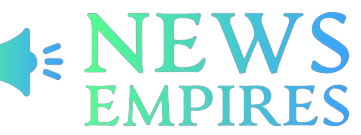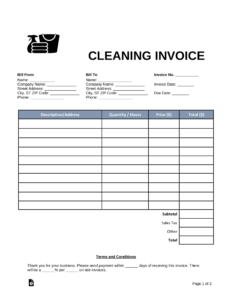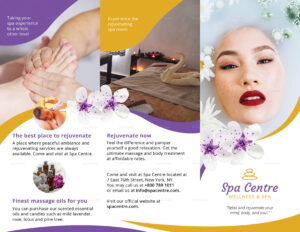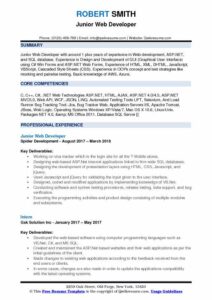As an educator, one of the most effective ways to keep parents and students informed about classroom activities, events, and important updates is through a classroom newsletter. A well-designed and informative newsletter can foster a strong home-school connection, enhance student engagement, and promote effective communication between all stakeholders. In this article, we will explore the importance of classroom newsletters and provide you with a comprehensive guide on how to create a compelling newsletter template that captures the attention of your readers.
The Importance of Classroom Newsletters
Classroom newsletters serve as an essential tool for educators to communicate with parents and students. They provide a platform to share important information, showcase student achievements, highlight upcoming events, and establish a sense of community within the classroom. Let’s delve deeper into the key benefits of classroom newsletters:
1. Enhancing Parent-Teacher Communication
Effective communication between parents and teachers is crucial for a student’s academic success. Classroom newsletters act as a bridge between home and school, allowing parents to stay informed about their child’s progress, upcoming assignments, and classroom activities. By keeping parents in the loop, educators can foster a collaborative and supportive learning environment.
2. Promoting Student Engagement
A well-designed classroom newsletter can capture the attention of students and actively involve them in their own education. By including student work, achievements, and upcoming projects, newsletters encourage students to take pride in their accomplishments and engage more actively in classroom activities. This sense of involvement can boost motivation and overall academic performance.
3. Establishing a Sense of Community
In an increasingly digital world, it is crucial to establish a sense of community within the classroom. Classroom newsletters provide an avenue for sharing stories, experiences, and celebrations, fostering a feeling of belonging among students and their families. By creating a supportive community, educators can enhance student well-being and promote positive relationships.
Creating an Effective Classroom Newsletter Template
Now that we understand the significance of classroom newsletters, let’s dive into the process of creating an effective newsletter template that will captivate your readers and effectively convey information. Follow these steps to design a compelling classroom newsletter:
1. Choose a Suitable Format
When designing your classroom newsletter template, consider the format that best suits your needs and preferences. You can opt for a digital format, such as an email newsletter or a PDF document, or a physical format, such as a printed newsletter. Choose a format that aligns with your communication goals and resources.
2. Select an Engaging Template
Fortunately, there are numerous pre-designed classroom newsletter templates available online. These templates offer a professional and visually appealing layout that can save you time and effort. Look for templates that are easy to customize and align with your classroom theme or school brand.
3. Include Essential Information
When crafting your newsletter, make sure to include all the essential information that parents and students need to know. This includes upcoming events, important deadlines, curriculum updates, classroom policies, and any other relevant information. Be concise and clear in your communication to ensure the information is easily digestible.
4. Showcase Student Achievements
Incorporating student achievements and success stories in your newsletter can be highly motivating for both students and parents. It not only celebrates individual accomplishments but also highlights the positive aspects of your classroom. Include photos, student quotes, and brief anecdotes to make the newsletter more engaging.
5. Provide Resources and Tips
Consider including resources and tips in your newsletter that can support parents in their role as partners in their child’s education. This can include educational websites, recommended reading lists, study strategies, and parenting resources. Providing valuable information will position you as a knowledgeable and supportive educator.
6. Use Visuals and Graphics
To make your newsletter visually appealing, incorporate relevant graphics, icons, and images. Visual elements can help break up the text and make the content more engaging and memorable. However, ensure that the visuals you choose are relevant and support the overall message of your newsletter.
7. Maintain Consistency
Consistency is key when it comes to classroom newsletters. Establish a consistent layout, color scheme, and branding elements to create a cohesive visual identity for your newsletter. This will make it easier for readers to recognize and navigate your newsletters, establishing a sense of familiarity and professionalism.
8. Proofread and Test
Before sending out your newsletter, take the time to proofread and test it thoroughly. Check for any grammatical errors, typos, or formatting issues that can undermine the credibility of your newsletter. Test any links, attachments, or interactive elements to ensure they work seamlessly.
Examples of Effective Classroom Newsletter Templates
Now that we’ve discussed the key elements of a compelling classroom newsletter template, let’s explore some examples to inspire your own creations:
1. The Weekly Roundup
This template provides a weekly overview of classroom activities, upcoming assignments, and important announcements. It includes a section for student spotlights and a resource corner for parents. The clean layout and clear headings make it easy to navigate and digest the information.
2. The Interactive Newsletter
This template incorporates interactive elements, such as clickable buttons, embedded videos, and interactive quizzes. It aims to engage both students and parents by providing interactive content that enhances the learning experience. The vibrant colors and playful design create a visually appealing newsletter.
3. The Monthly Showcase
This template focuses on showcasing student work and achievements. It includes a section for student artwork, creative writing pieces, and project highlights. The newsletter aims to celebrate student accomplishments and foster a sense of pride in their work. The use of large visuals and minimal text makes it visually appealing and easy to read.
Conclusion
Classroom newsletters play a vital role in establishing effective communication, promoting student engagement, and creating a sense of community within the classroom. By following the steps outlined in this guide and utilizing well-designed templates, educators can create compelling newsletters that captivate readers and effectively convey information. Remember to choose a suitable format, include essential information, showcase student achievements, provide valuable resources, use visuals, maintain consistency, and thoroughly proofread your newsletters. By implementing these strategies, you can strengthen the home-school partnership and enhance the overall learning experience for your students.
FAQs After The Conclusion
1. How frequently should I send out my classroom newsletter?
The frequency of your classroom newsletter will depend on the needs of your classroom and the preferences of your parents or guardians. However, a weekly or bi-weekly newsletter is generally recommended to keep parents informed without overwhelming them with too much information.
2. Can I include personal anecdotes or stories in my newsletter?
Yes, personal anecdotes or stories can add a personal touch to your newsletter and make it more relatable. However, ensure that the stories you share are relevant and appropriate for your audience. Consider the privacy and confidentiality of your students and their families when sharing personal experiences.
3. Should I include translations of my newsletter for non-English speaking parents?
If you have non-English speaking parents or guardians in your classroom, it is essential to provide translated versions of your newsletter to ensure effective communication. Consider using translation tools or seeking assistance from bilingual staff members or volunteers to make your newsletter accessible to all families.
4. How can I encourage parents to actively engage with my newsletter?
To encourage active engagement with your newsletter, consider including interactive elements such as surveys, polls, or calls to action. You can also invite parents to contribute by sharing their ideas, suggestions, or feedback. Additionally, regularly evaluate the effectiveness of your newsletter and make adjustments based on parental input.
5. Can I incorporate student input into the creation of the newsletter?
Absolutely! Involving students in the creation of the newsletter can enhance their sense of ownership and engagement. You can assign specific roles to students, such as photographers, writers, or editors, and encourage them to contribute their work or ideas. This collaborative approach can foster a positive classroom environment and promote student voice.
Summary
Classroom newsletters are an invaluable tool for educators to establish effective communication, promote student engagement, and create a sense of community within the classroom. By selecting a suitable format, using engaging templates, including essential information, showcasing student achievements, providing valuable resources, using visuals, maintaining consistency, and thoroughly proofreading your newsletters, you can create compelling and informative newsletters that captivate readers. Remember to tailor your newsletter to the needs of your classroom and continuously seek feedback to improve its effectiveness. With a well-designed newsletter, you can strengthen the home-school partnership and enhance the overall learning experience for your students.





